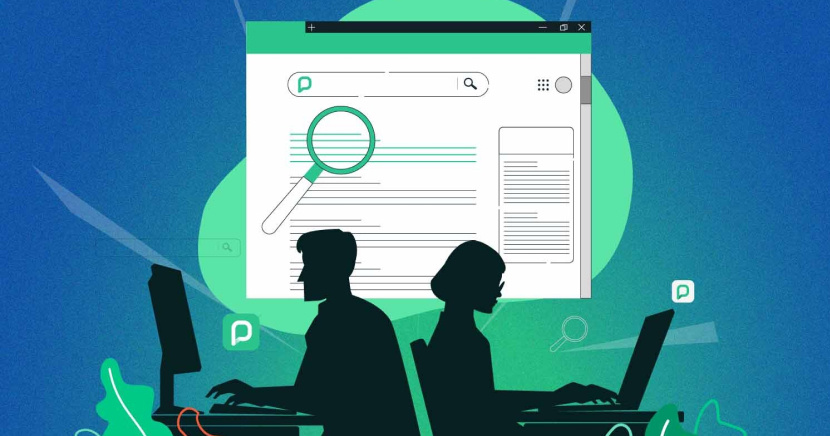Imagine, if you will, a future in which the local public library is the essential hub of every neighborhood, a meeting place not only for keen readers, but also for job seekers, kids and teens, lifelong learners and just about any other group you could think of.
This is the picture painted by the Canadian Urban Institute (CUI) in its 2023 report "Overdue: The Case for Canada's Public Libraries". Well, it's one of two potential scenarios outlined in that publication. The other is a more dystopic vision of a future where severe funding cuts force many libraries to reduce staffing levels, programs and hours of service.
We might tackle that one another time, but for now let's accentuate the positive.
A brighter future with community partnerships
CUI envisions a future in which libraries have pivoted to become the hearts of their communities, providing the primary public infrastructure, available seven days a week and free to everyone, with services tailored to reflect the unique neighborhoods and diverse populations they serve.
Recognized for their deep understanding of community, library leaders are invited to participate in regional planning efforts and initiatives, and they broker partnerships with provincial service providers and community organizations, connecting with childcare centers, schools and academic institutions "to maximize the benefits of integrated service delivery".
In addition:
Library staff work closely and collaboratively with service providers from other public agencies, hosting a range of services on site or adjacent to library facilities, providing everything from newcomer settlement and passport services to tax clinics and employment workshops to cultural programming.
See also:
-
Creating a third place: Public library design ideas for community engagement
-
Everyday superheroes: How librarians are making a difference in their communities
Stronger programming with library partnerships
Why would your library want to enter into partnerships with governmental agencies, other community organizations, local businesses or other potential partners?
This past June, the American Library Association (ALA) addressed this question in a publication titled "Partnering for Stronger Programming: A Toolkit for Libraries":
Why work with a partner? Because together, we make a greater impact. With this tool, we consider the big-picture goals of our library programming—helping to create communities that are connected, knowledgeable, creative, civically engaged, healthy, economically vital, welcoming, joyful, and caring (or all of the above!
Building community partnerships
By forming alliances with various community organizations, libraries can significantly boost community engagement, and contribute to the overall well-being of the neighborhoods they serve. Imagine the possibilities when local nonprofits, community centers, schools, government agencies, and businesses come together with libraries to create a network of support and resources.
Enhanced community engagement and collaboration can result in innovative programs and events that attract diverse audiences. By sharing resources and expertise, libraries and their partners can achieve more than they could individually, ensuring that library services are better aligned with the unique needs of the community.
A bridge between justice and accessibility
In its 2024 State of America's Libraries report, the ALA highlighted a few community projects across the United States, including a partnership between Cleveland Public Library and Cleveland Housing Court.
The ALA report notes that "the economic impact of the past few years has disproportionately affected renters across the country" in the form of rising rents and eviction rates.
According to American Libraries magazine:
To help respond to evictions and other housing issues, Cleveland Housing Court installed videoconferencing kiosks—first in the courthouse, when in-person hearings couldn’t be held safely, then later at Cleveland Public Library, to make it more accessible for the public to attend hearings.
These kiosks are available by registration or on a walk-in basis for individuals who need to appear before the housing court. According to the ALA, kiosk locations were selected based on eviction rate data, and their availability at CPL branches has removed barriers for residents, many of whom are unable to travel to the courthouse downtown.
“CPL can be a bridge between justice and accessibility, providing vital resources to our neighborhoods,” wrote Felton Thomas, Jr., CPL executive director and CEO, and Tana Peckham, CPL chief strategy officer, in American Libraries. “By working with partners, we can make a brighter and more just
future for all.”
Effective partnership strategies

One key strategy for building and sustaining successful community partnerships is to identify potential partners and build relationships with them. This can be achieved by attending community events, joining local organizations, and proactively reaching out to discuss potential collaborations. By being present and engaged in the community, libraries can identify partners who share similar goals and values.
Community partnerships: questions to consider
In its "Partnering for Stronger Programming" toolkit, the ALA advises libraries to consider the following questions when they are looking to create a new partnership:
-
What topics best reflect our community’s needs, and are our current programs and
partnerships addressing these? -
What topics does the partner focus on, and are these reflective of community needs?
-
How might a partnership focusing on any of these topics help us deepen or expand the community impacts we’re aiming for?
Measuring partnership success
Measuring partnership success is crucial for evaluating the effectiveness of community partnerships. Libraries can track various metrics such as the number of community members served, the number of programs and services offered, and the level of community engagement.
Additionally, gathering qualitative feedback through surveys and focus groups can offer valuable insights into the community’s experiences and satisfaction with the partnership.
Shaping a more connected community

Your library is already a vital community resource, with its dedicated team of library workers offering patrons a universe of stories through its collections of books and other materials — including digital resources such as PressReader.
In partnering with local organizations, businesses, and other groups, you’re not just expanding your library’s reach — you’re creating a dynamic hub of community support. These collaborations can enhance your library services and programs, attract new patrons and offer valuable resources that benefit everyone. By leveraging the strengths of others, you position your library as a true center of innovation and opportunity.
The partnerships you forge today will help shape a more vibrant, connected and resourceful community tomorrow. Now is the time to embrace those relationships and unlock new potential for your library and its patrons.









